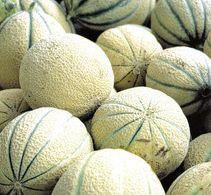
Melon are now the second largest most important product grown using biologicial pest control systems in Andalusia, with some 3,000ha set to be farmed using beneficial insects rather than pesticides this season in southern Spain.
According to Andalusian fresh produce marketing organisation Hortyfruta, some 3,000 predatory insects will be used in greenhouses in the region this season for the control of pests such as thrip during the melon and watermelon campaign.
In the case of watermelons, some 2,355ha are currently farmed using biological pest control systems, making it second in terms of scale to only pepper production. Overall, the systems are now used on between 50 and 60 per cent of melon and watermelon production in the country, Hortyfruta said.
Andalusia accounted for 60 per cent of Spain’s watermelon production last year, with the province of Almería, which produced some 474,697 tonnes, at the heart of the sector. Other leading production zones in Andalusia included Seville with 61,875 tonnes, Cordoba with 30,000 tonnes and Granada, which produced around 17,000 tonnes.
In terms of melon production, Andalusia was responsible for an estimated 23 per cent of Spain’s overall output in 2008, making the second-largest producer at a national level, behind the region of Castilla-La Mancha.
However, Andalusia, which produced over 300,703 tonne of melons, remains Spain’s leading marketer of the fruit at an international level, as it concentrates on the Galia, Honeydew and Cantaloupe varieties, which are primarily for export.
The principal destinations for Andalusia’s melon shipments are France, Germany, the Netherlands and the UK, which together account for 78 per cent of exports.
Germany is also the leading importer of Andalusian watermelon, receiving a total of 45.6 per cent of the Spanish region’s watermelon exports last year.



